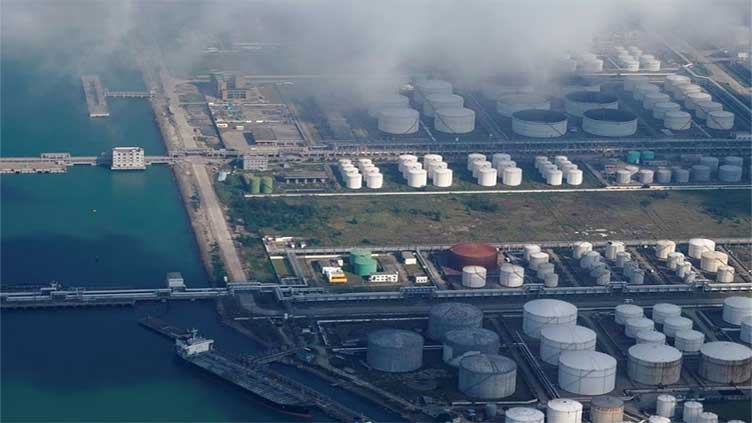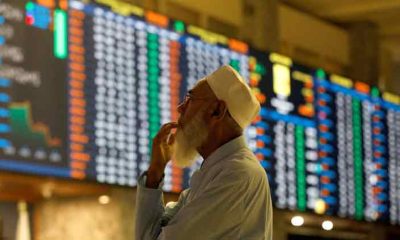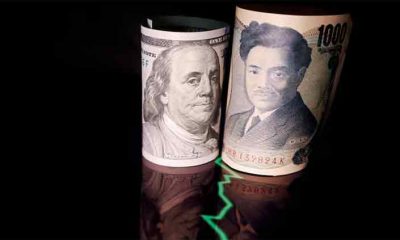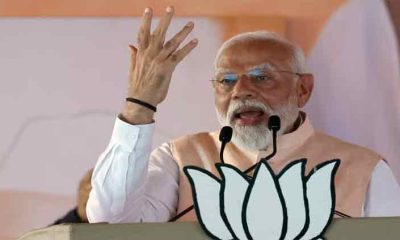The yen jumped suddenly against the dollar on Monday, with traders citing yen-buying intervention by Japanese authorities to try to underpin a relentless tumble in the currency to levels last seen over three decades ago.
The dollar fell sharply to 155.01 yen from as high as 160.245 earlier in the day. Trade sources said Japanese banks were seen selling dollars for yen. It was last fetching 156.21 yen.
Traders had been on edge for weeks for any signs of action from Tokyo to prop up a currency that has fallen 11 per cent against the dollar so far this year. The yen’s plunge to 34-year lows has come despite a historic exit from negative rates last month as traders bet Japanese rates will remain low for some time.
Japan’s top currency diplomat Masato Kanda declined to comment when asked if authorities had intervened.
Read more: Japanese yen trips past 160 per dollar to April 1990 lows
“I won’t comment now,” Kanda, the vice finance minister for international affairs, told reporters.
Japan’s Ministry of Finance was not immediately available for comment, with markets in the country closed for a holiday on Monday.
“The move has all the hallmarks of an actual BOJ intervention and what better time to do it than on a Japanese public holiday, which means lower liquidity in USD/JPY and more bang for the Bank of Japan’s buck!”, said Tony Sycamore, Sydney-based market analyst at IG.
Bank of Japan Governor Kazuo Ueda told a press conference after a meeting last week that monetary policy does not directly target currency rates, although exchange-rate volatility could have a significant economic impact.
Read more: Powell dashes US rate cut hopes, says current policy needs more time to work
The yen had moved nearly 3.5 yen between 158.445 and 154.97 on Friday as traders vented their disappointment after the Bank of Japan kept policy settings unchanged and offered few clues on reducing its Japanese government bond (JGB) purchases – a move that might have put a floor under the yen.
The yen has been under pressure as US interest rates have climbed and Japan’s have stayed near zero, driving cash out of yen and into dollars to earn so-called “carry”.
Read more: Stocks wobble as interest rates remain the main focus
The suspected intervention comes just days ahead of the Federal Reserve’s May 1 policy review, with investors already anticipating a delay in Fed rate cuts after a batch of sticky US inflation data and as officials including Chair Jerome Powell emphasise even those plans are dependent on data.
Japan intervened in the currency market three times in 2022, selling the dollar to buy yen, first in September and again in October as the yen slid towards 152 to the dollar, a 32-year low at the time. Tokyo is estimated to have spent as much as 9.2 trillion yen ($60.78 billion) defending the currency.
The United States, Japan and South Korea agreed earlier this month to “consult closely” on currency markets in a rare warning and Tokyo has stepped by its rhetoric against excessive yen moves.
The yen has also hit multi-year lows against the euro, Australian dollar and Chinese yuan.
“Today’s move, if it represents intervention by the authorities, is unlikely to be a one-and-done move,” said Nicholas Chia, Asia macro strategist at Standard Chartered Bank in Singapore.
“We can likely expect more follow through from MOF if USD-JPY travels to 160 again. In a sense, the 160-level represents the pain threshold, or new line in the sand for the authorities.”
Post Views: 11


 Sports3 months ago
Sports3 months ago
 Sports3 months ago
Sports3 months ago
 Fashion2 months ago
Fashion2 months ago
 pakistan3 months ago
pakistan3 months ago
 pakistan3 months ago
pakistan3 months ago
 World2 months ago
World2 months ago
 Sports2 months ago
Sports2 months ago
 World2 months ago
World2 months ago






















